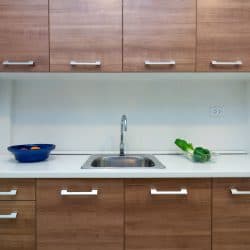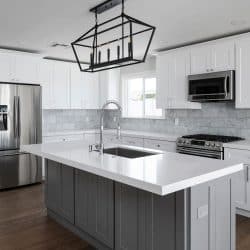During the holidays, the kitchen is the primary room that family and friends gather to share delicious treats and socialize. For such a high-trafficked area, you'll want family and friends to see your kitchen at its best. Sometimes all your kitchen needs to look appealing is newly finished cabinets. It seems like an easy choice, right?
Nonetheless, there are several choices for cabinet finishes. Most finishes alter the style and look of your kitchen. So, keep your kitchen theme in mind when choosing one. Also, cabinet finishes offer protection against grease, moisture, dents, and scratches. Some finishes are better at this than others.
But you may wish to sacrifice durability to create a specific ambiance. Choose between the following kitchen cabinet finishes:
- Matte Paint Finish
- Satin Paint Finish
- High Gloss Paint Finish
- Oil-Based Stained Finish
- Water-Based Stained Finish
- Polyurethane Varnish
- Conversion Varnish
- Glazed Finish
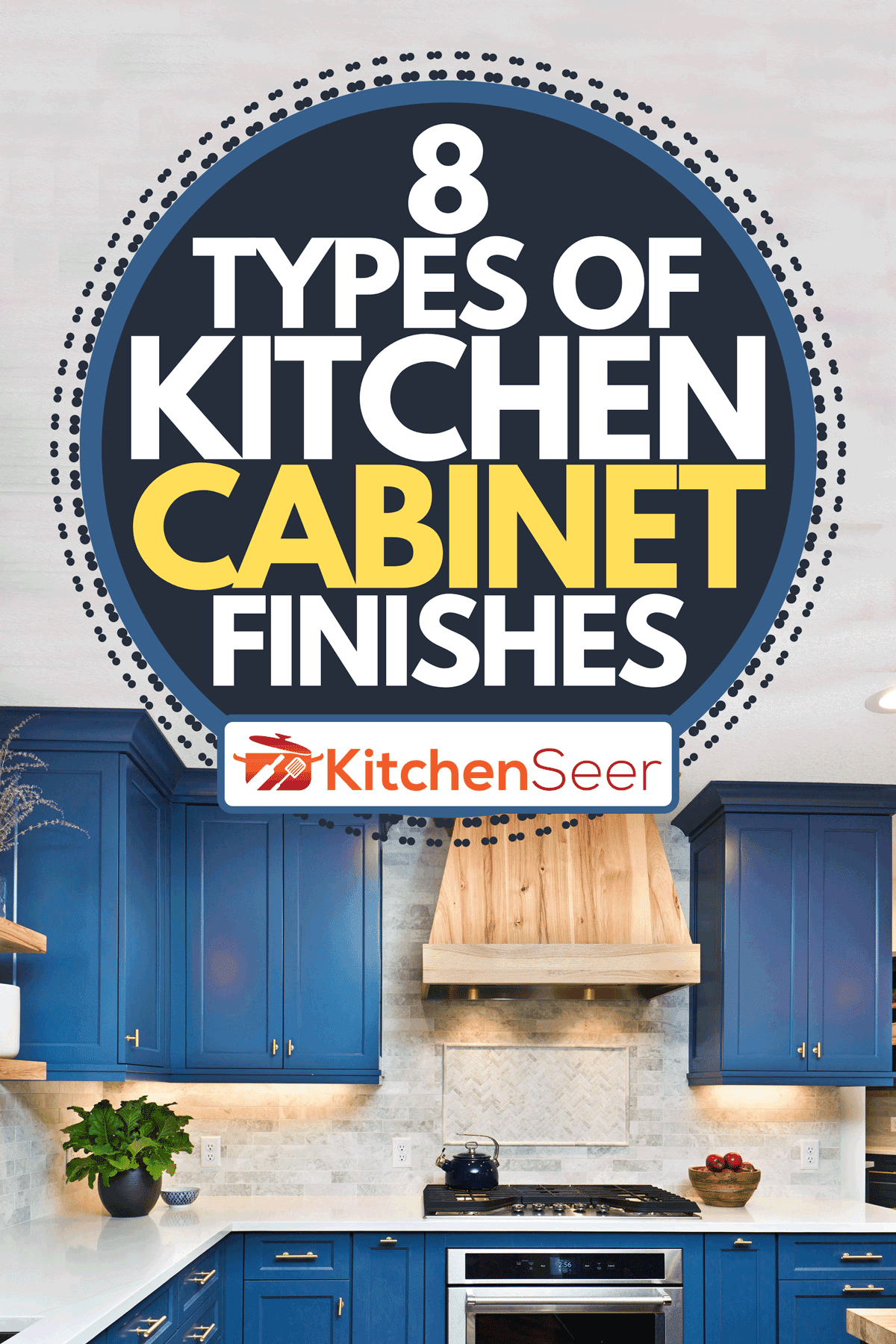
Paint Finish
Overall, paint finish (or paint sheen) is the most popular choice for cabinet finishes. Paint sheen refers to shininess (or lack thereof) from light reflection. A high sheen indicates higher glossiness. And low sheen indicates lower glossiness. Although there are several types, we'll just talk about a few of them, including matte, satin, and high-gloss.
By the way, the color of your kitchen cabinets does not have the match the wall color. Check out our article, "Should Wall Color Match Kitchen Cabinets?" to learn more.
Matte Paint Finish
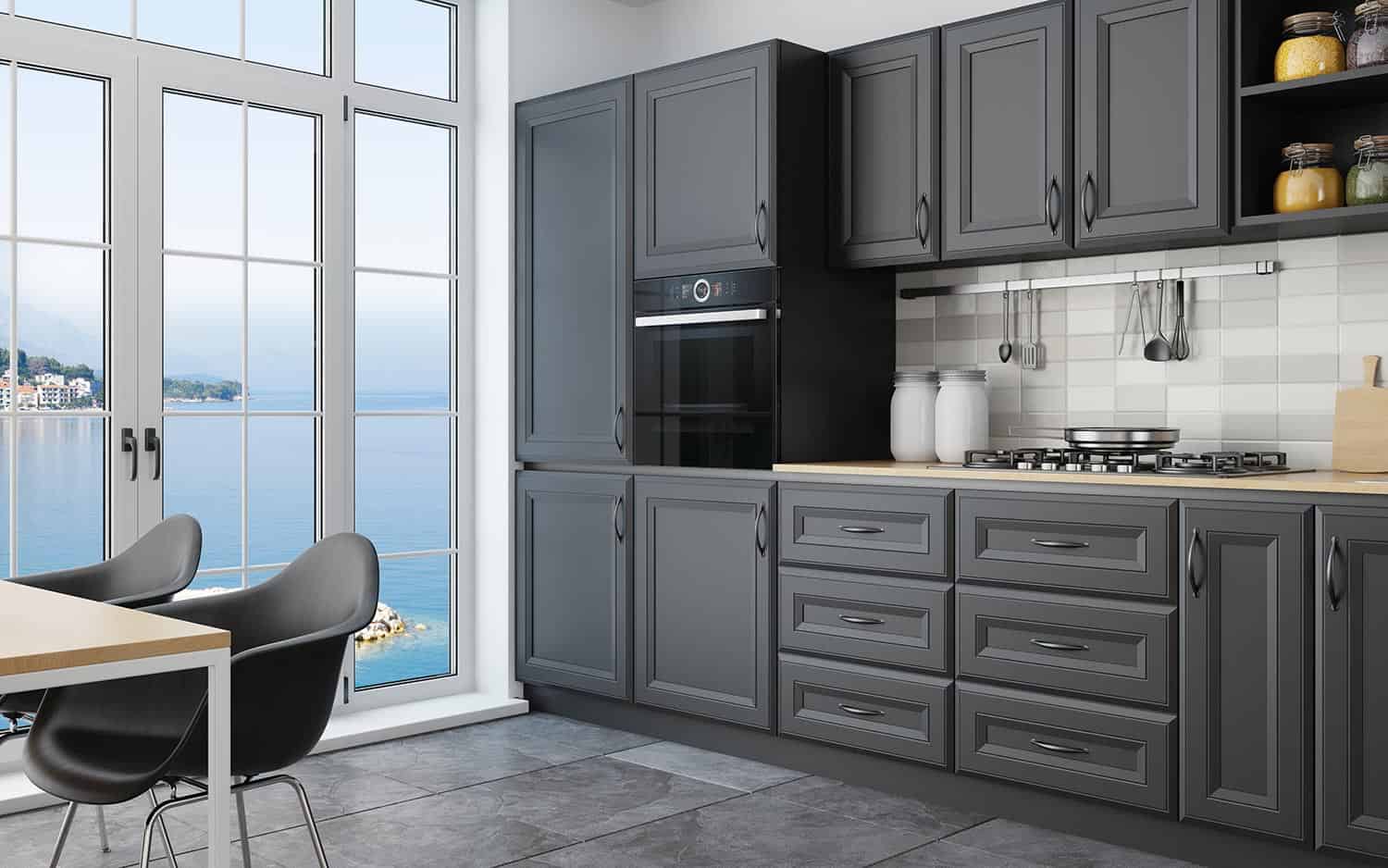
Matte (or flat) paint finish has minimal gloss; it reflects <10% of light. Even though this is not as popular to use as semi-gloss paint finishes, it does not mean that it is not a great option. Dark gray in matte looks unique and chic.
It may be the kitchen update you're looking for if your kitchen has a simple, chic theme. Here is a dark and bold matte finish in Kensington Gray.
Click here to see it on Amazon.
Best of all, matte paint finish does not have to be sanded as much as the others because it requires a little texture to adhere to the cabinet. However, it's not as easy to clean up as glossy finishes. And it is not as stain-resistant. So, the next ones that we talk about might be better for you to use.
Satin Paint Finish
Generally, satin paint finish is the preferred choice for the kitchen cabinets. It's the perfect blend between matte and high gloss. And it demonstrates a modern and clean kitchen theme.
In contrast to matte, satin paint finish reflects 26-40% of light. Thus, it offers some glossiness without an overload of shininess. In fact, some people find it to be easier on the eyes than higher gloss paint finishes, which we'll talk more about soon.
If you're looking to add deep brown to your kitchen cabinets, then this one is perfect for you. It comes in Satin Espresso.
Click here to see it on Amazon.
High Gloss Paint Finish
As the name suggests, high gloss (or full gloss) paint finish provides the highest level of glossiness; it reflects 70-90% of light. This is best to use for kitchens with clean and smooth themes.
Generally, increased light makes rooms appear larger. So, this one is excellent for opening up the area for a more open-themed concept. Also, higher glossiness corresponds to increased durability; it will withstand many potential scratches and dents. Thus, this might be a great choice if you have a lot of family members who use the kitchen.
Unfortunately, high-gloss easily highlights imperfections. You have to frequently clean them to maintain their sleek, elegant smoothness. If you don't mind and love cleaning, then you should try out this high gloss sealer and finish.
Click here to see it on Amazon.
Stained Finish
If you're looking to enhance your wood kitchen cabinets, then you should coat them with a stained finish. A stained finish can highlight the existing color of wood, or it can darken it and change the overall kitchen theme entirely.
There are several types of stained finish, but we'll focus on a natural stained finish, oil-based stained finish, and water-based stained finish. Keep reading to find out which one is best for your kitchen cabinets.
Water-Based Stained Finish
If you want to keep the little nicks and imperfections that give your kitchen cabinets their unique character, you should consider using a natural stained finish. This finish won't hide the wood's grain. Thus, it's great to preserve wood. Typically, it's best to use this type for country themes.
For example, if you have beautiful, old cabinets passed down from your grandparents, you can use this finish to help maintain their originality and uniqueness without altering their value. Here is a lovely water-based stained finish that will accentuate the wood naturally.
Click here to see it on Amazon.
Oil-Based Stained Finish
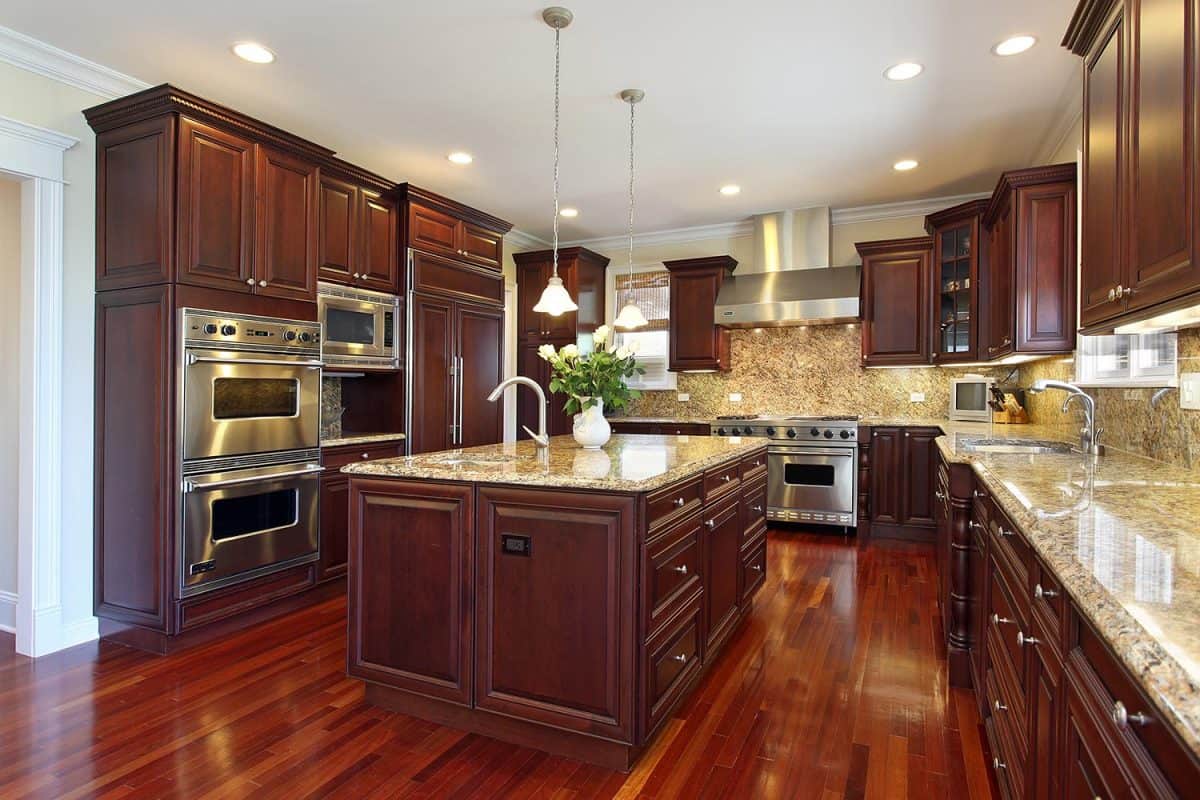
An oil-based stained finish is a great way to bring dull wood back to life by adding pigment and sealant to the cabinets. If you add this to your kitchen cabinets, you won't have to worry about the wood appearing dated. Generally, it provokes a modern and youthful kitchen theme.
Plus, it's easy to apply, especially because it dries slowly. Slower drying time allows you to correct any imperfections or mistakes.
However, cabinets must be thoroughly primed and well-sanded before applying oil-based stained finish. This finish will seep into cracks and dents, creating hyperpigmented areas that are unsightly.
While it still seals and protects wood, oil-based stained finish is not as durable as water-based. So, it has to be touched up every few years. And don't keep the expired cans; even unopened, they only last 2-3 years. Here is a gorgeous Hazelnut brown that you can use for soft brown kitchen cabinets.
Click here to see it on Amazon.
Varnish
Unlike paint finish, varnish is a type of finish that contains no color; it's designed to be a transparent, protective coat that can be applied to wooden kitchen cabinets. If you don't want to alter your cabinets' existing color, you probably want to select this type of finish.
Varnish comes in several different types and different levels of sheen. Two popular choices that are safe for the cabinets include polyurethane varnish and conversion varnish.
Polyurethane Varnish
Polyurethane varnish is a clear type of finish that provides a strong, protective coating to extend the life of your cabinets by many years. Since it's made of plastic, polyurethane varnish is extremely strong and difficult to damage. It's so strong that it can be used to varnish floors.
In truth, polyurethane varnish can be overdone. With this type, you should only apply one coat and touch up as needed.
Still, it's great for keeping your cabinets strong and beautiful. If your cabinets are already damaged, then you should check out our article, "How To Restore Kitchen Cabinets And Fix Worn Spots," to learn how to fix them.
Polyurethane varnish is available in several different glosses. Here is an excellent one that comes in satin if you're looking for a mild to medium level of gloss.
Click here to see it on Amazon.
Conversion Varnish

Conversion (or catalyzed) varnish is a type of finish that comes in two parts— a resin and an acid catalyst. And it's extremely tough! If you have a high-trafficked kitchen where your child's football teammates tend to congregate, then this one is best for you to use on the kitchen cabinets.
Grimy hands and bony elbows won't harm them. In fact, it's even stronger than polyurethane varnish. Plus, it dries faster because it uses an acid catalyst to dry.
Generally, a professional needs to apply conversion varnish because it requires a mask, gown, and strong paint sprayer. This type is not the one for you if you prefer to do it yourself. It's also more expensive.
Perhaps you can save some money by buying the varnish yourself. Here is an excellent conversion varnish that comes in satin.
Click here to see it on Amazon.
Glazed Finish
Although not as common as the others, a glazed finish involves cabinet glazing, which involves adding another color to accent the cabinets. The second color may be added all over the cabinet to allow the first color to peek through, or it can just be added to specific areas, like lines and edges.
It'It'sfantastic way to emphasize an old-fashioned theme and create shadows and detail.
Overall, this type of finish takes the most work, but the experience might be fun and innovative for you. Follow these steps to perform cabinet glazing on specific areas:
- Gather your supplies.
- Get your glaze base.
- Brush the glaze along the desired lines and edges.
- Allow it to dry for 2-3 minutes.
- Wipe mineral spirits along the glaze.
- Use a dry towel to clean up any smudges.
Need a visual? Check out this helpful video:
However, some people consider this style to be quite old-fashioned, but this might be the style and theme that you desire. If that's the case, then go for it! You're the one living with it.
Also, you don't haveve to glaze your kitchen cabinets with medium brown like in the video. You can use transparent or semi-transparent glazes. Here is a great semitransparent glaze that you can try. But it also comes in different colors, like blue and pink.
Click here to see it on Amazon.
In Closing
In summary, there are many finishes to choose from, including paint finish, stained finish, varnish, and glazed finish. Within those sections, you have even more choices, such as matte paint finish, satin paint finish, high gloss paint finish, water-based stained finish, oil-based stained finish, polyurethane varnish, conversion varnish, and glazed finish.
Which one you choose depends on the style of your kitchen and the durability needed. Good luck with revitalizing your kitchen cabinets!









![Stretch ceiling in the kitchen with installed and included spotlights. What Paint Finish Is Best For Kitchen Ceiling [3 Suggestions]](https://kitchenseer.com/wp-content/uploads/2021/09/Stretch-ceiling-in-the-kitchen-with-installed-and-included-spotlights.-What-Paint-Finish-Is-Best-For-Kitchen-Ceiling-3-Suggestions-250x250.png)

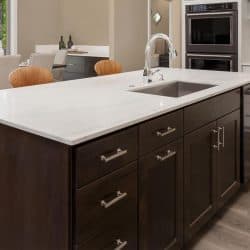
![A luxurious kitchen interior with appliances, What Color Cabinets Go With White Appliances? [6 Great Ideas!]](https://kitchenseer.com/wp-content/uploads/2022/03/Luxurious-kitchen-interior-with-appliances-250x250.jpg)
